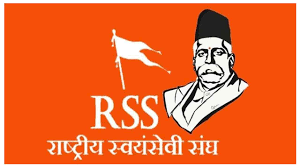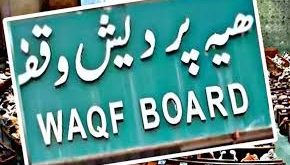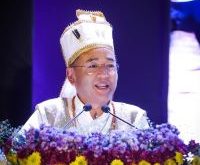Prime Minister Narendra Modi is once again transforming India’s transportation network, inaugurating three new Vande Bharat Express trains that now link Jharkhand to major cities across the country. On September 15, PM Modi launched these modern, semi-high-speed trains virtually from Tatanagar, extending India’s growing rail connectivity.
The newly introduced routes—Tatanagar-Patna, Deoghar-Varanasi, and Tatanagar-Berhampur—promise to vastly enhance both intra- and inter-state travel options. The Tatanagar-Patna Vande Bharat Express is expected to complete its journey in about seven hours, operating six days a week. Additionally, the Deoghar-Varanasi route, which connects two key pilgrimage centers, is set to promote religious tourism and further bolster Jharkhand’s railway infrastructure.
This infrastructure expansion is part of a broader strategy by the Modi-led Central Government, aimed at revolutionizing connectivity and boosting industrial growth in Jharkhand. Meanwhile, the Hemant Soren-led Jharkhand Mukti Morcha (JMM) government has struggled to capitalize on such advancements, positioning the BJP as the driving force behind Jharkhand’s march towards progress.
Modi Government’s Visionary Infrastructure Development in Jharkhand
The Modi administration has prioritized comprehensive infrastructure development, transforming Jharkhand’s economy and fostering both national and global connectivity.
Railway Expansion: Enhancing Connectivity and Economic Growth
Jharkhand’s railway network has witnessed substantial improvements under the Modi government. The introduction of Vande Bharat Express trains on critical routes such as Ranchi-Patna and Ranchi-Howrah has cut travel times significantly, making it easier for people to commute for business, education, and personal purposes. Renovation and electrification of the Ranchi-Lohardaga-Tori railway line have increased freight efficiency, and projects like the doubling of important railway lines have laid the foundation for Jharkhand’s emergence as a logistics hub.
Aviation Development: Connecting Jharkhand to the World
The inauguration of Deoghar Airport in 2022 marked a major step forward for Jharkhand’s aviation sector. Apart from serving religious pilgrims to Baba Baidyanath Dham, the airport boosts local tourism and business opportunities. New projects, including upcoming airports in Bokaro and Dumka, will further integrate Jharkhand into India’s aviation landscape, creating jobs and enhancing the state’s socio-economic structure.
Sahibganj Multi-Modal Terminal: Transforming Cargo Connectivity
Launched in 2019 as part of the Jal Marg Vikas Project, the Sahibganj Multi-Modal Terminal has significantly improved cargo transportation by linking waterways with rail and road. Located along the Ganga River, this terminal facilitates the movement of goods between Jharkhand, Varanasi, Haldia, and Nepal, positioning Jharkhand as a major cargo hub. The terminal’s increased capacity, from 30 lakh to 55 lakh tons, reflects the government’s long-term commitment to Jharkhand’s infrastructure development.
Economic and Industrial Growth: A Vision for Self-Reliant Jharkhand
Jharkhand’s abundant resources have fueled the Central Government’s efforts to drive industrial growth, generate employment, and increase income levels. The LPG bottling plants in Bokaro and Barhi not only cater to local energy demands but also position Jharkhand as an energy supplier to neighboring regions, creating job opportunities in the process.
The Sindri Nano Urea Plant is another significant initiative, helping reduce India’s dependence on urea imports. This facility provides affordable fertilizers to farmers across Jharkhand and nearby states, contributing to increased agricultural productivity.
Jharkhand is also part of larger national projects like the Eastern Dedicated Freight Corridor and the Amritsar-Kolkata Industrial Corridor, both of which are expected to accelerate industrialization and lower transportation costs. These initiatives underscore the Central Government’s commitment to making Jharkhand an industrial powerhouse.
Social Development: Advancements in Education and Healthcare
Beyond industrial and infrastructure projects, the Modi government has also focused on strengthening Jharkhand’s social infrastructure, with major reforms in education and healthcare.
Education: Empowering Tribal and Rural Communities
Several initiatives aimed at uplifting underprivileged communities have been introduced. The Eklavya Model Residential Schools provide quality education to tribal children, closing the educational gap in rural areas by offering free residential schooling. PM SHRI Schools have also upgraded hundreds of schools with modern infrastructure, ensuring marginalized students have access to high-quality education.
Healthcare: A New Milestone with AIIMS Deoghar
The establishment of AIIMS Deoghar has been a game changer for healthcare in Jharkhand, bringing world-class medical services to the state’s residents. Previously, patients had to travel to distant cities for specialized care, but AIIMS Deoghar now offers top-tier healthcare locally.
Moreover, the Ayushman Bharat Scheme has extended free healthcare to millions, while Jan Aushadhi Kendras provide affordable medicines, making healthcare more accessible to underserved populations.
Tribal Welfare and Empowerment
Under Prime Minister Modi, tribal development has been a priority, with numerous schemes designed to empower these communities in education, healthcare, and economic development. The Birsa Munda Smriti Park and the recognition of Hazaribagh’s Sohrai and Khovar art with GI tags highlight Jharkhand’s cultural significance.
Additionally, the government’s focus on improving roads, housing, and other infrastructure in tribal areas has markedly improved living conditions, ensuring that these marginalized populations are part of India’s growth narrative.
Looking Ahead: BJP’s Vision for Jharkhand
As the primary opposition party in Jharkhand, the BJP is gearing up for the upcoming state elections. The transformational work done by the Modi-led Central Government offers a clear path forward for the state’s development. While the JMM government has been slow to harness these opportunities, the BJP stands ready to usher Jharkhand into a new era of growth.
Through initiatives ranging from industrial investments to healthcare and education reforms, the Modi government has demonstrated its commitment to inclusive growth in Jharkhand. As the state prepares for its next chapter, the people of Jharkhand are poised to embrace a future of self-reliance and prosperity under BJP leadership.
 Newspatrolling.com News cum Content Syndication Portal Online
Newspatrolling.com News cum Content Syndication Portal Online







